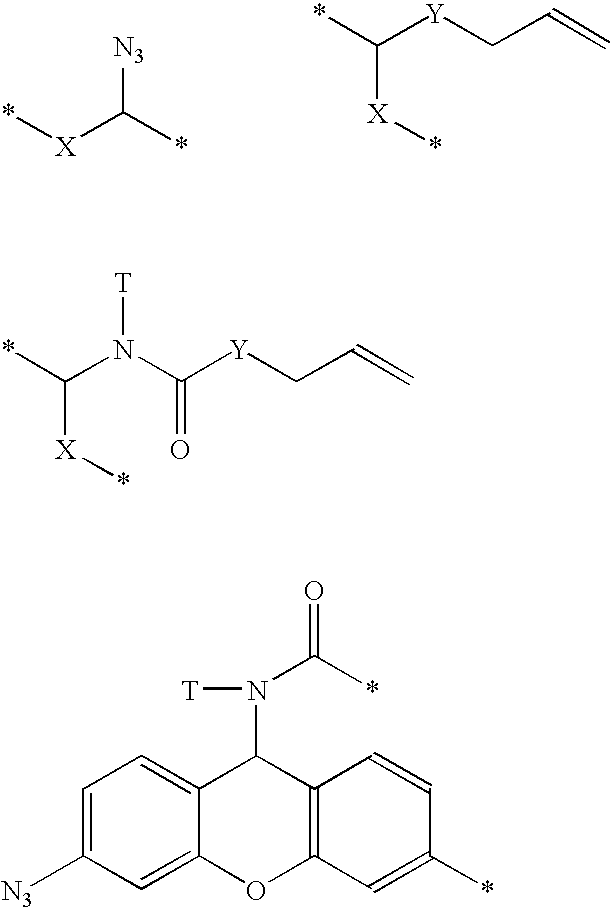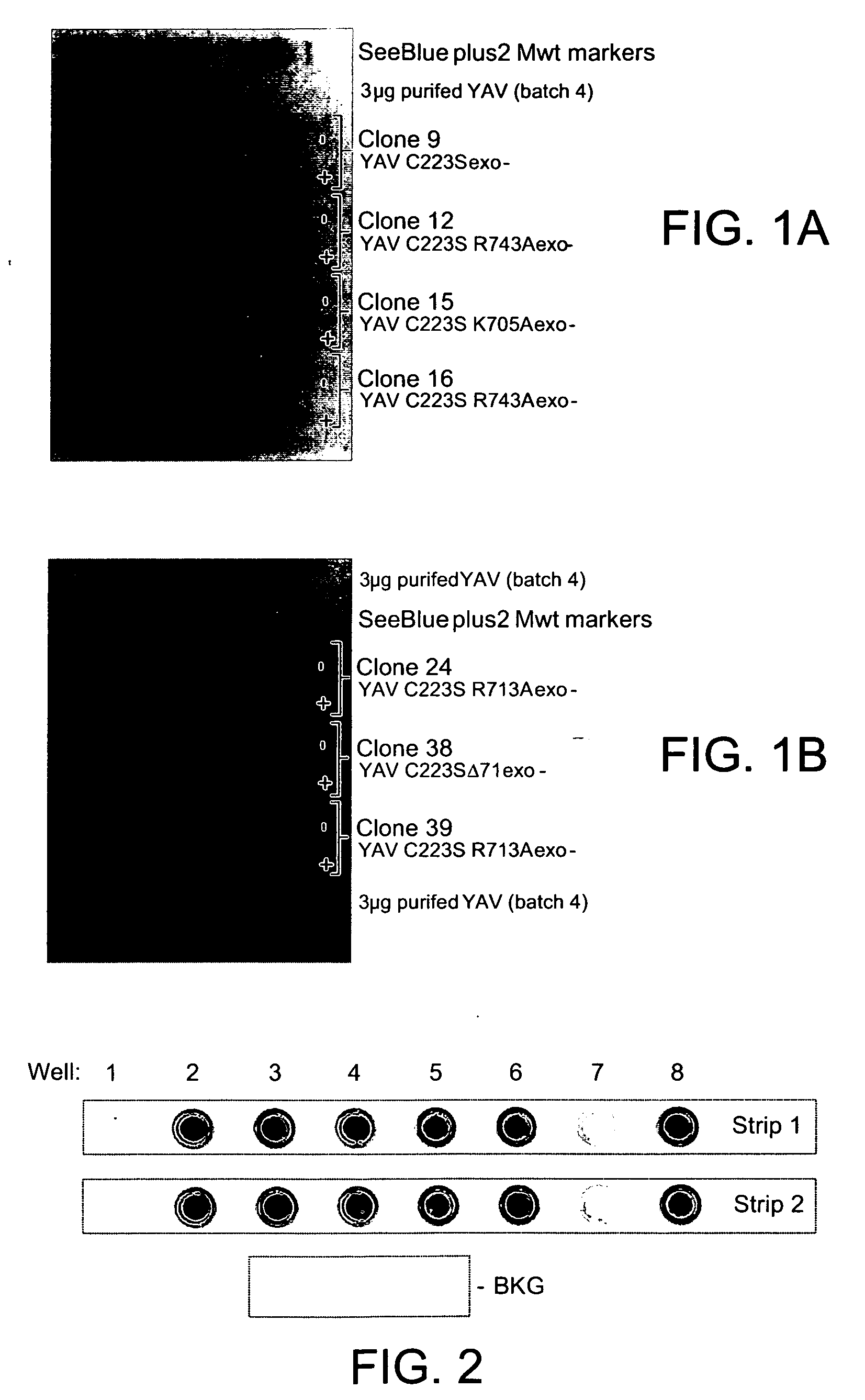Polymerases
a technology of polymerase enzymes and enzymes, applied in the field of polymerase enzymes, can solve problems such as certain disadvantages in reaction completion, and achieve the effects of reducing the number of enzymes, improving ability, and high reaction completion levels
- Summary
- Abstract
- Description
- Claims
- Application Information
AI Technical Summary
Benefits of technology
Problems solved by technology
Method used
Image
Examples
example 1
Preparation of Altered Polymerases
Rationale
[0190] Site-directed mutations were introduced in the C-terminal region of 9°N-7 YAV C223S polymerase in an attempt to reduce the affinity of the enzyme for DNA (wild-type 9°N-7 polymerase has a very high affinity for DNA, Kd=50 pM; Southworth et al. 1996. PNAS. 93, 5281).
[0191] An energy minimised overlaid alignment (contracted by Cresset) of the crystal structures of the open form of 9°N-7 DNA polymerase (PDB=1qht), the open structure of a closely related DNA polymerase RB69 (PDB=1ih7) and the closed form of RB69 (PDB=1ig9) was used as a structural model for the identification of key residues involved in DNA binding. The crystal structure of the closed form of RB69 polymerase (Franklin et al. 2001. Cell 105, 657) identified a number of residues that formed H-bond or electrostatic interactions with the complexed DNA, either directly to the nucleotide bases or the phosphate backbone. A high proportion of these residues were basic (Lys79...
example 2
NUNC Tube Assay Using Crude Protein Preparation
[0200] Small 5 ml cultures of the mutant enzymes (along with a culture of YAV C223S exo- for direct comparison) were taken through a quick purification as outlined in WO 2005 / 024010 up until the heat treatment step. At this point, the samples were considered to be sufficiently pure to test their activity.
[0201] The buffers for each of the crude preparations were exchanged into enzymology buffer (50 mM Tris pH 8.0, 6 mM MgSO4, 1 mM EDTA, 0.05% Tween20) using an S300 gel filtration spin-column. The samples were not normalised for concentration. The test employed was a simple incorporation of ffTTP into surface-coupled A-template hairpin. 2 pmoles of 5′-amino oligo 815 (5′-CGATCACGATCACGATCACGATCACGATCACGATCACGCTGATGTGCATGCTGTTGTTTTTTTACAACAGCATGCACATCAGCG-3′) (SEQ ID NO: 17) was coupled to a NUNC-nucleolink strip according to the manufacturers protocol.
[0202] Once washed, each well was incubated with a 20 □l aliquot of a crude enzyme p...
example 3
Single Base Incorporation Assay
[0206] The activity of the crude enzyme preparations (normalised concentrations) was measured using the single base incorporation assay as described in WO 2005 / 024010. 10 minute incubations were run with either 30 or 3 μg / ml crude enzyme preparation in the presence of 2 μM ffT-N3-cy3 and 20 nM 10 A hairpin DNA (32P-labelled), aliquots of the reaction mixture were withdrawn at 0, 30, 60, 180 and 600 s and run on a 12% acrylamide gel.
Results
[0207] The gel images are shown in FIG. 3.
[0208] The band intensities were quantified using Imagequant and the fluorescence intensity plotted versus incubation time to generate the time-courses shown in FIG. 4.
[0209] These data give an estimate of the performance of the mutant enzymes for the first base incorporation of ffTTP relative to YAV. Due to the concentration normalisation, the activities are directly comparable. The 71 mutant is essentially inactive (kobs is 21% of that observed for YAV), R743A and K705...
PUM
| Property | Measurement | Unit |
|---|---|---|
| pH | aaaaa | aaaaa |
| pH | aaaaa | aaaaa |
| pH | aaaaa | aaaaa |
Abstract
Description
Claims
Application Information
 Login to View More
Login to View More - R&D
- Intellectual Property
- Life Sciences
- Materials
- Tech Scout
- Unparalleled Data Quality
- Higher Quality Content
- 60% Fewer Hallucinations
Browse by: Latest US Patents, China's latest patents, Technical Efficacy Thesaurus, Application Domain, Technology Topic, Popular Technical Reports.
© 2025 PatSnap. All rights reserved.Legal|Privacy policy|Modern Slavery Act Transparency Statement|Sitemap|About US| Contact US: help@patsnap.com



